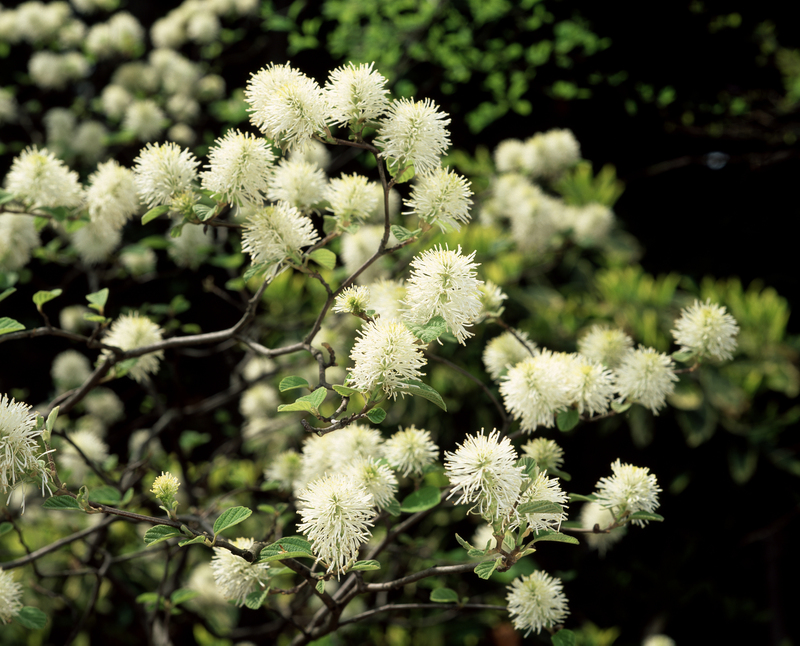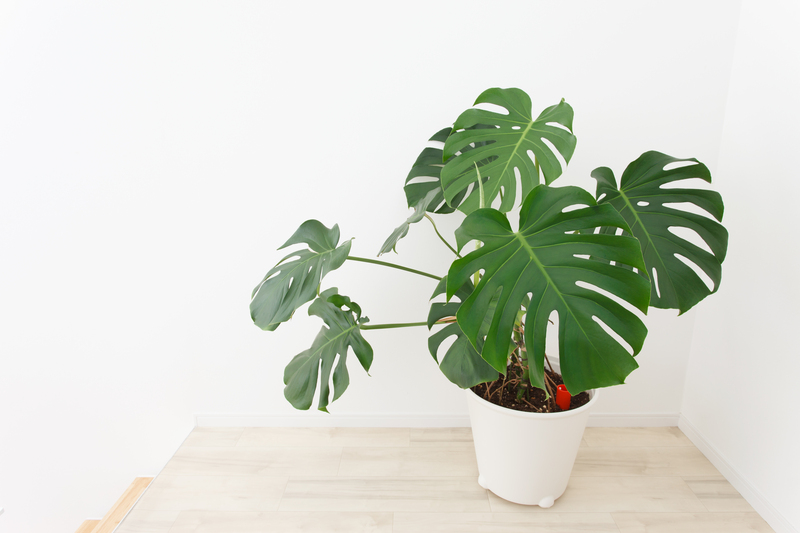Battling the Cold: Keep Your Garden Plants Safe This Winter
Posted on 04/09/2025
Battling the Cold: Keep Your Garden Plants Safe This Winter
When winter arrives, gardeners face the daunting challenge of protecting their precious plants from chilly temperatures. As the days shorten and frost threatens, your once-thriving sanctuary can become vulnerable to the harsh elements. However, with proper planning and care, you can ensure that your beautiful landscape survives--if not thrives--through the winter season. In this comprehensive guide, we'll explore tested strategies for insulating, nurturing, and effectively safeguarding your garden plants during winter.
Understanding Cold Weather Threats to Your Garden Plants
Before devising a plan to protect your garden, it's essential to understand the numerous ways winter cold can impact your plants. Various forms of winter stress can wreak havoc in your outdoor green sanctuary:
- Freezing temperatures: Prolonged exposure can kill or severely damage plant tissues, especially in tender and semi-hardy species.
- Frost: Sudden drops in temperature can cause ice crystals to form within plant cells, leading to cell rupture.
- Desiccation: Cold winds and freeze-thaw cycles can dry out evergreen leaves and roots, causing "winter burn".
- Snow and ice accumulation: Heavy snow or ice can break branches or crush delicate plants.
- Soil heaving: Repeated freezing and thawing of the ground may push roots out, leaving plants exposed.
Recognizing these threats is the first step in crafting an effective winter plant protection strategy.

Essential Preparations: How to Get Your Garden Ready for Winter
To keep your garden plants safe this winter, begin your preparations before the first frost arrives. These proactive steps can significantly boost your plants' resilience:
1. Choose the Right Plants for Winter Hardiness
The most effective way to battle winter cold is to select plants that can withstand your local climate. Every plant has an assigned USDA Hardiness Zone; make sure yours are suited for your region. For challenging climates, opt for native species or established hardy perennials.
2. Amend and Mulch Your Soil
Healthy soil is a plant's best defense. Enrich your garden beds with compost in early autumn. Apply a generous 2-4 inch layer of organic mulch--like shredded bark, straw, or leaf mold--around the base of plants. This insulates the root zone against severe cold and helps retain soil moisture.
3. Hydrate Thoroughly Before Ground Freezes
Well-watered plants are less prone to winter desiccation. Give your garden a deep watering before the first hard freeze, especially evergreens and newly-planted trees or shrubs.
4. Prune Carefully--But Not Too Much
Remove damaged, diseased, or dead wood from shrubs and trees before winter sets in. However, avoid heavy pruning in late fall, as it may encourage new growth that's more susceptible to frost damage.
Essential Methods to Protect Garden Plants from Winter Cold
- Mulching: Besides insulating roots, thick mulch can prevent soil heaving by moderating temperature fluctuations.
-
Covering Plants: Use frost cloths, burlap, old sheets, or specialized garden fabrics to create temporary covers on frost-prone nights.
- For small plants and seedlings, upturned buckets or cloches provide excellent protection.
- Building Windbreaks: Install barriers (fences, burlap screens, or even evergreen boughs) to shield sensitive plants from drying winter winds.
- Bringing Potted Plants Indoors: Pot-grown specimens are especially susceptible to root damage. Move container plants into garages, basements, or sunrooms before the first freeze, or group them in a sheltered spot and wrap the pots for extra insulation.
- Anti-Desiccant Sprays: These products can be applied to certain evergreens to prevent excessive moisture loss through leaves.
When and How to Use Frost Covers and Cloches
Timing is critical. Cover your plants before sunset on nights when frost is forecast. Remove covers in the morning once the temperature rises and sun returns, so plants don't overheat.
Tips for effective cover use:
- Ensure the cover reaches the ground and is secured so wind cannot dislodge it.
- Avoid letting covers rest directly on foliage. Use stakes or hoops for support.
- Never use plastic sheeting directly on plants. If using clear plastic, create a framework so it doesn't touch leaves.
Special Care for Vulnerable Plants
Protecting Young, Tender, or Tropical Plants
Some plants require extra attention to stay safe throughout the winter:
- Tender shrubs and perennials: Apply thicker mulch (even up to 6 inches) around these plants to keep their root crowns insulated.
- Roses: Mound soil or compost about 12 inches high around the base. Cover with straw or rose collars for extra insulation.
- Small trees or fruit trees: Wrap trunks with tree wrap or hardware cloth to prevent frost cracks and animal damage.
- Tropical plants: Dig up bulbs (like dahlias or cannas) after the first light frost and store them in a cool, dry basement until spring.
Evergreen Plant Protection in Winter
Evergreens photosynthesize year-round, making them prone to winter burn from wind and sun when roots are frozen and can't absorb water.
- Water thoroughly before the soil freezes solid.
- Apply a thicker layer of mulch over roots and surrounding soil.
- Consider wrapping shrubs in burlap or using anti-desiccant sprays for added protection.
Creating Microclimates to Safeguard Your Plants
A savvy gardening technique is to manipulate the environment to your plants' advantage. By creating microclimates, you help garden plants survive winter extremes:
- Plant close to buildings or south-facing walls--they radiate warmth and block harsh wind.
- Choose raised beds for better drainage and less risk of waterlogged, frozen roots.
- Group plants together--they create mutual shelter and conserve humidity.
Utilizing Cold Frames and Greenhouses
For ultimate protection, cold frames and unheated greenhouses (polytunnels) can provide a stable, frost-free environment throughout winter. These structures trap the sun's heat during the day and reduce heat loss at night.
- Use cold frames to overwinter seedlings, herbs, or less hardy perennials.
- Monitor for adequate ventilation on sunny days to prevent overheating.
- Add insulating layers--like bubble wrap or thermal fleece--to unheated greenhouses for extreme conditions.
Common Mistakes to Avoid When Protecting Winter Gardens
While striving to keep your garden plants safe this winter, avoid these frequent missteps:
- Neglecting to water: Plants still lose moisture above freezing. Frozen soil locks out water, so keep an eye on hydration and water on mild days if needed.
- Applying mulch too early: Mulching before the ground cools invites rodents, pests, and diseases. Wait until the first hard frost.
- Leaving pots unprotected: Terracotta or ceramic containers can crack when wet and frozen. Store them inside or wrap in bubble wrap or burlap.
- Using plastic covers incorrectly: Plastic can suffocate plants or intensify cold damage if left on during sunny days.
- Pruning late in the season: Fresh cuts stimulate growth that will be easily killed by frost.
Signs of Cold Damage and Recovery Tips
Despite best efforts, extremely harsh winters can still inflict some harm. Here's how to recognize and address cold damage:
- Blackened, mushy leaves or stems: These indicate frost has ruptured the cell walls. Prune away dead tissue in spring.
- Split bark (frost cracks): Trim jagged bark edges to prevent disease and let the wound heal naturally.
- Brown or faded evergreen needles: These show winter burn. Water deeply in early spring and fertilize gently to encourage new growth.
- Uprooted or "heaved" plants: Re-set these as soon as possible, firming soil and reapplying mulch.
Patience is key: Don't rush to remove apparently dormant plants. Some perennials emerge weeks after others--give them time before discarding.
Preparing for Next Winter: Long-Term Garden Strategies
To keep your garden plants safe during all winters, adopt long-term solutions:
- Gradually shift to more resilient, native, or well-adapted species.
- Build permanent windbreaks or living fences with evergreens or hedgerows.
- Raise beds and improve soil health for better drainage and root protection.
- Add water features or rain gardens to moderate temperature shifts.
- Invest in quality cold frames or greenhouses for sensitive species.

Frequently Asked Questions About Protecting Your Garden in Winter
Can I use household items for winter plant protection?
Yes! Old blankets, towels, buckets, and cardboard boxes all make excellent makeshift covers for sudden cold snaps. Always keep materials dry, lightweight, and never rest them directly on leaves.
How often should I water plants during the winter?
Water as needed when the soil is unfrozen and conditions are dry, especially for newly planted shrubs and evergreens. Avoid overwatering, as soggy soil can contribute to root rot.
What mulch is best for insulating plants?
Organic mulches like shredded bark, straw, pine needles, or leaves are most effective. They insulate well, gradually enrich the soil, and let water pass through.
Should I fertilize garden plants in winter?
Avoid fertilizing late in the season. Wait until early spring as growth resumes. Excess nutrients late in fall can stimulate vulnerable new growth.
Conclusion: Keep Your Garden Thriving Against the Winter Chill
With a thoughtful approach, protecting your garden plants from winter's cold is truly achievable. Begin with the right plant choices, proactive care, and timely protection methods. From mulching and covering to using cold frames and creating microclimates, these strategies will ensure your garden emerges healthy and vibrant when spring arrives.
Don't let the winter blues bring down your green oasis! With our complete guide on battling the cold to keep your garden safe this winter, you'll be equipped to safeguard your plants, nurture their resilience, and continue enjoying your garden all year long.

